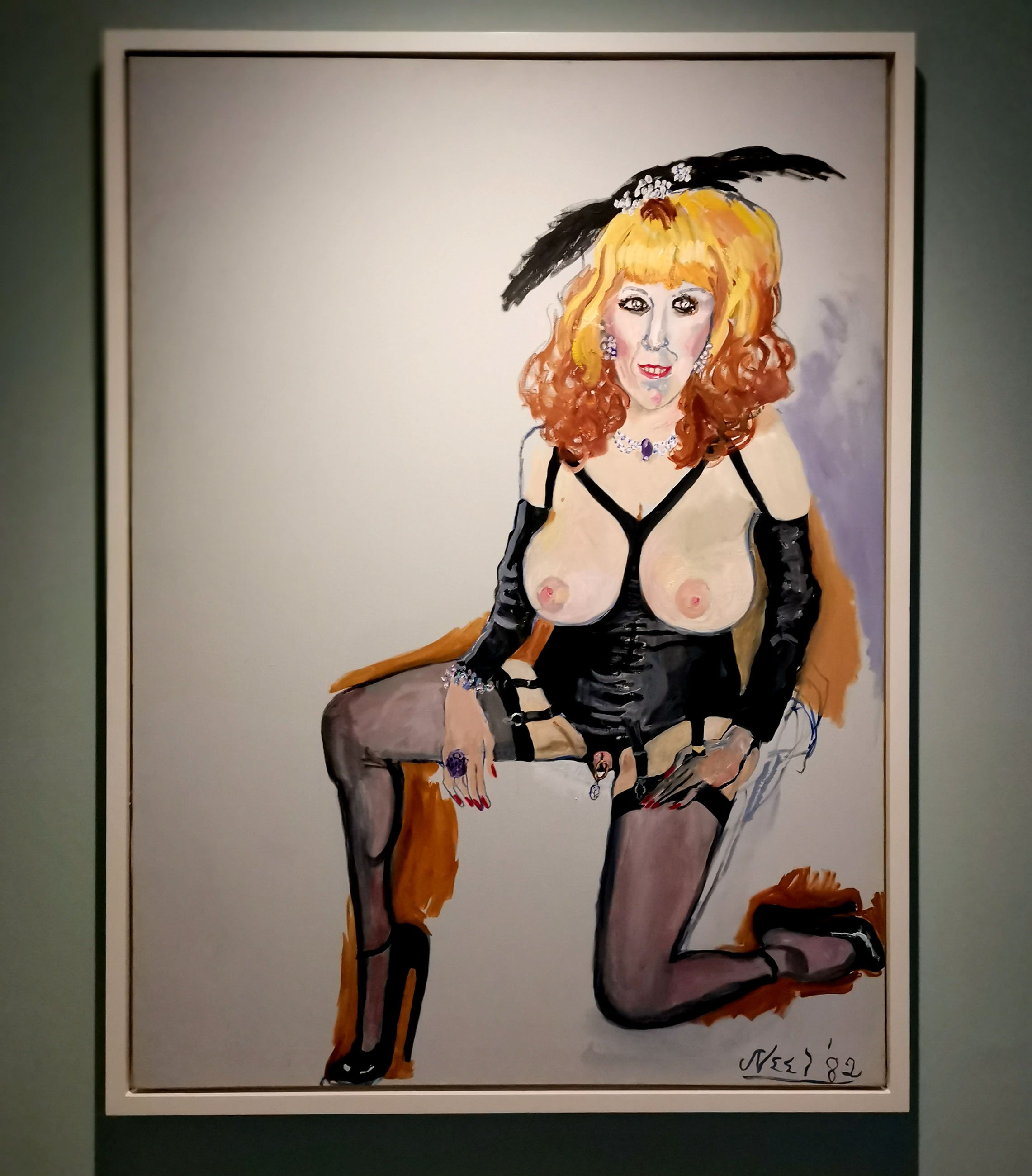A collector of souls
Back in early March we paid a visit to to the Barbican to see ‘Alice Neel: Hot Off The Griddle’. Jane has been a long standing advocate of Neel, while I am a relative late comer to her work. As such it would be interesting to see what we both took away from this, the largest exhibition to date of the artist’s work in the UK. Born in Pensylvania in 1900, Neel would spend the majority of her life, with the exception of a short spell in Cuba, living and working in New York City. Over the course of a career spanning more than 50 years she would create a body of work comprised of almost 3,000 pieces and would, within her own lifetime, come to be regarded as a feminist icon, receiving a National Women’s Caucus for art from president Jimmy Carter in 1979.
So what of the work presented here at the Barbican as part of this exhibition? Commencing with her formative years, struggling to find her way as a professional artist during a time of great economic turmoil, we hear of her participation in the Federal Art Project, a government run scheme sponsored by the Works Progress Administration (WPA), and designed to support artists by paying them a weekly bursary in return for work which would adorn non federal municipal buildings and public spaces. Other notable participants in this scheme included Jackson Pollock and Lee Krasner, the latter describing the project as a “Life Saver”.
This exhibition showcased a number of paintings from the earlier part of her career, very much informed by her political stance, a member of the communist party from 1935 and a life long champion of socialism, portraits on display include those of marxist film maker Sam Brody, and communist intellectual Harold Cruse. Works from the later period of her career include a diverse array of characters who sat for her in her New York apartment, of particular note here is the performance artist and sex activist Annie Sprinkle. Jane was interested in watching the watchers, noting the reactions of those present to the works on display. Given that many of Neel’s subjects were not necessarily well known, but rather every day people, whom Neel seemed to find infinitely more interesting than the celebrities of her day, it was interesting to note how some viewers really connected with this while others found it uninspiring or even distasteful (the aforementioned Annie Sprinkle portrait, as well as Neel’s own nude self portrait painted toward the end of her life).
Alice Neel: Off The Griddle is, as most of the Barbican exhibitions tend to be, a comprehensive and well composed reflection of the artist and her life and with only 6 days left to see it at the time of writing, one we recommend you make an effort to see before it’s gone.

